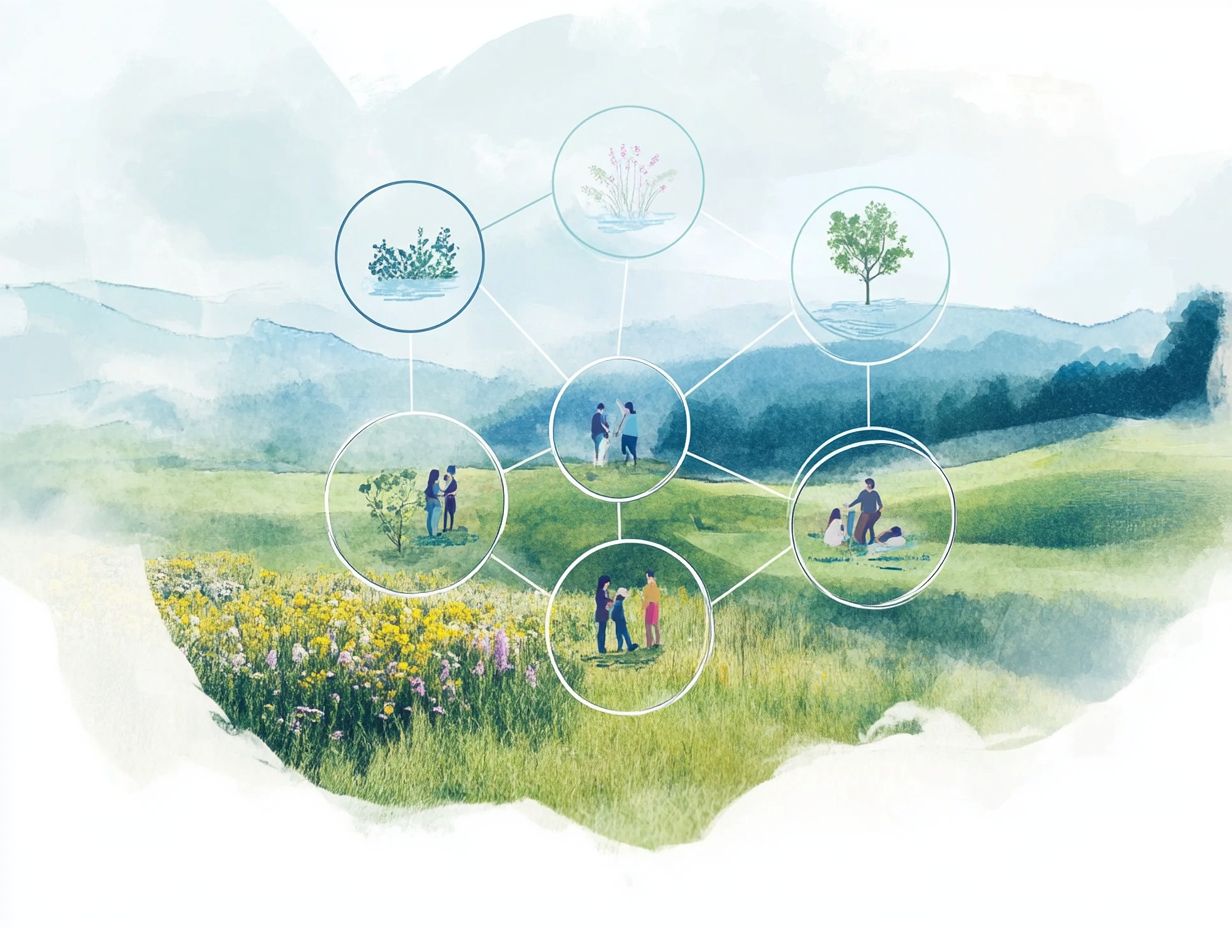5 Key Elements of a Resilience Program
In today s unpredictable landscape, cultivating resilience is absolutely vital for both individuals and organizations.
This article delves into the essential components of a resilience program, guiding you through understanding its significance, recognizing potential risks, and crafting effective crisis management strategies.
You ll discover how to establish a strong support network, assess your program continuously, and adapt to evolving situations.
By the end, you’ll understand how a well-executed resilience program can be your secret weapon for not just surviving, but truly thriving in times of crisis.
Contents
Key Takeaways:

- Resilience is vital for businesses to survive and thrive in the face of challenges.
- Identifying and assessing risks is crucial in developing a strong resilience program.
- A well-developed crisis management plan and a support network are essential elements of a resilience program.
1. Understanding the Importance of Resilience
Understanding the importance of resilience is essential for your well-being and the health of your community. It enhances your ability to bounce back from challenges and fosters personal growth through meaningful goals.
Experts like Lyubomirsky and Seligman explain that resilience isn t just a trait; it s a skill set you can cultivate. By practicing emotional regulation and honing problem-solving skills, while nurturing strong relationships and social networks, you can significantly improve your emotional health and maintain a positive mindset.
Research by scholars like Nassim Nicholas Taleb and Southwick highlights the transformative power of resilience in navigating life s challenges and achieving success. Their findings reveal that individuals who cultivate resilient traits manage stress effectively and perform better in both personal and professional settings.
Social support is a crucial piece of this puzzle. Connections with friends and family serve as safety nets that encourage you to persevere. Start practicing self-care today to unlock your resilience and thrive! Engaging in self-care practices whether it s regular physical activity or mindfulness techniques enhances your ability to cope and thrive, reinforcing resilience as a vital component of a fulfilling life.
2. Identifying and Assessing Risks
Identifying and assessing risks is a foundational step in building mental resilience. It involves recognizing potential adverse events that could impact your emotional health and mental strength, especially in contexts like PTSD.
Utilizing a blend of psychological assessments and community feedback will be crucial in this journey. Tools such as standardized questionnaires can help uncover underlying fears and stressors. Connecting with community members provides invaluable insights into shared experiences.
Understanding specific adversities, like trauma or chronic stress, is essential to develop targeted strategies aimed at enhancing your mental fortitude. By fostering open dialogue and gathering diverse perspectives, you ll be able to craft powerful action plans that drive real change, ultimately promoting healthier coping mechanisms and greater emotional stability.
3. Developing a Plan for Crisis Management
Developing a comprehensive crisis management plan is essential for fostering resilience. It equips you and your organization with the creative flexibility and agency needed to navigate challenging circumstances effectively.
At the heart of this plan lies a thorough risk assessment, which identifies potential threats and vulnerabilities. This allows you to craft tailored strategies that mitigate these challenges. Resource allocation is also crucial; ensuring that both human and material assets are optimally positioned during a crisis can make all the difference.
Emotional regulation techniques are essential for maintaining stability when the pressure is on. For example, the Comprehensive Soldier Fitness program incorporates resilience training, teaching individuals how to cope with stress through mindfulness and positive psychology.
Successful initiatives also emphasize adaptive leadership, enabling teams to thrive even in the midst of turmoil.
4. Building a Support Network

Building a robust support network is essential for enhancing your resilience. Social support and strong relationships act as protective factors that strengthen your emotional health and aid in recovery from adversity.
These networks include family, friends, and professional groups, each serving a unique purpose. Family members provide unconditional love and practical assistance during tough times. Friends offer companionship and a sense of belonging that nurtures joy and understanding. Professional support groups bring expertise and strategies to help navigate challenges more effectively.
By strengthening these relationships, you equip yourself to face hardships with greater confidence. You also cultivate a richer sense of community. This enriched life experience, filled with diverse perspectives, ultimately contributes to your overall well-being.
5. Continuously Evaluating and Adapting the Program
Continuously evaluating and adapting your resilience program is essential for ensuring its long-term effectiveness. Regular evaluations are vital for making quick adjustments that can dramatically improve your resilience.
Incorporating feedback mechanisms like surveys or one-on-one check-ins provides invaluable insights into your journey. These assessments reveal your strengths and highlight areas for improvement. Ways to measure success, such as goal achievement rates and participant engagement levels, serve as benchmarks to gauge your progress.
Program facilitators should stay flexible and open to change, modifying content and strategies based on the feedback they receive. By fostering this adaptive approach, the program remains relevant and evolves to meet your specific challenges in pursuing resilience.
What Is Resilience and Why Is It Important?
Resilience is your psychological superpower, allowing you to bounce back from adversity and significantly enhancing your emotional well-being. It equips you to tackle challenges head-on, recover from trauma, and maintain a positive mindset even when times are tough. This makes resilience a focal point in psychological studies by researchers like Seligman and others.
Remember, resilience is more than just surviving; it s about your ability to adapt effectively in stressful situations. Experts such as Charney emphasize that resilience isn t simply an inherent trait it can be cultivated through experiences and learned coping strategies. Tedeschi further supports this idea by showcasing how post-traumatic growth meaning that people often find new strengths after experiencing tough times can emerge from adversity, enabling you to transform struggles into powerful sources of strength.
In your daily life, these qualities contribute to improved stress management and emotional regulation, making resilience a critical ingredient for thriving amid life s inevitable challenges.
What Are the Key Components of a Resilience Program?
A comprehensive resilience program encompasses several essential components, including emotional regulation techniques, problem-solving skills, and the cultivation of social support all of which contribute to your personal growth and enable you to thrive in the face of adversity.
These elements work in harmony to strengthen your mental resilience, allowing you to navigate life s challenges with increased ease. For example, honing your emotional regulation skills helps you manage your responses to stress, enabling you to remain calm and focused even in high-pressure situations. Your problem-solving abilities allow you to creatively tackle obstacles, leading to more effective solutions.
Cultivating social support acts as a crucial safety net, providing encouragement and fresh perspectives during tough times. Research shows that individuals with strong social connections tend to be more resilient, underscoring the importance of nurturing these relationships.
Together, these components create a holistic approach to resilience that is both adaptable and impactful, setting you up for success in any circumstance.
How Can Businesses Implement a Resilience Program?

You can build a workplace that focuses on emotional health, empowers employees, and provides resources for developing resilience skills the abilities that help people recover from setbacks.
Structured training programs can equip your team with tools to navigate challenges confidently. For instance, consider launching workshops on stress management techniques and mindfulness practices. These will enable your staff to cope effectively with workplace pressures.
By offering access to support resources, like counseling services, you can create a safety net for employees during tough times. A tech firm reported a remarkable increase in productivity and employee satisfaction after integrating resilience strategies into their development framework, showcasing the transformative effects of such initiatives.
What Are the Benefits of a Resilience Program?
A resilience program presents numerous advantages, including heightened emotional well-being, enhanced problem-solving skills, and a more positive outlook. Exploring online courses for building resilience can further foster a more productive and engaged workforce.
Research shows that organizations adopting these programs experience a 25% increase in employee engagement, along with a significant drop in absenteeism. Furthermore, resilient employees are 50% more likely to report higher job satisfaction.
These programs also build a culture of adaptability, giving you essential tools to manage stress and view challenges as opportunities for growth. This not only boosts individual performance but also strengthens team dynamics, fostering collaboration and innovation key ingredients for long-term success.
How Can a Resilience Program Help in Times of Crisis?
A resilience program proves especially beneficial in crises, providing you with the essential tools to bounce back quickly, maintain emotional health, and effectively utilize your social support systems.
For example, after Hurricane Katrina, community-based resilience programs played a crucial role in helping people regain a sense of normalcy. These initiatives typically included mental health support, skills training, and access to resources that promoted self-sufficiency.
Similarly, during the COVID-19 pandemic, many organizations quickly implemented resilience strategies that prioritized remote mental health services and boosted community engagement through virtual platforms. Effective execution of these programs often relies on collaboration among stakeholders, regular assessments of community needs, and adaptive strategies designed for specific crises. This ensures that support remains both relevant and impactful.
Such proactive measures not only reduce the immediate effects of trauma but also lay a solid foundation for your long-term recovery.
What Are the Common Challenges in Implementing a Resilience Program?
Implementing a resilience program often presents challenges, such as resistance to change, insufficient training, and the ongoing need for emotional regulation to foster a sense of agency among participants.
These obstacles can hinder progress and diminish the potential benefits of such initiatives. You may encounter pushback from employees who feel overwhelmed or skeptical about adopting new practices, which can stall implementation.
To address this, leadership must show unwavering commitment to the initiative by providing ongoing support and resources. Offering comprehensive training sessions tailored to various roles will equip team members with the skills and confidence they need to thrive.
Encouraging open communication creates a culture of trust and collaboration, allowing participants to express concerns and share experiences, ultimately enhancing the overall impact of the resilience program.
Frequently Asked Questions

Have more questions about resilience programs? Reach out to us for personalized guidance!
What are the 5 key elements of a resilience program?
The five key elements of a resilience program are leadership commitment, risk assessment, training and awareness, communication, and monitoring and testing.
Why is leadership commitment important?
Leadership commitment is vital as it sets the organization’s tone. When top management shows dedication, everyone else is more likely to follow suit.
How does risk assessment help?
Risk assessment helps identify potential threats and vulnerabilities. It allows organizations to prioritize these risks and create strategies to handle them effectively.
Why is training and awareness crucial?
Training and awareness ensure that employees understand the resilience program. When everyone knows what to do during a crisis, it reduces confusion and panic.
How does effective communication contribute?
Effective communication keeps employees informed about disruptions and their responsibilities. This coordination leads to a stronger response during crises.
What is the purpose of monitoring and testing?
Monitoring and testing are essential for assessing a resilience program’s effectiveness. Regular checks help identify gaps and ensure the program stays robust and current.






